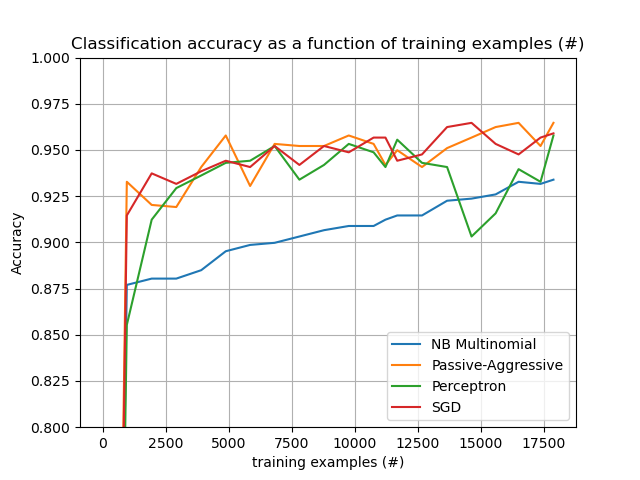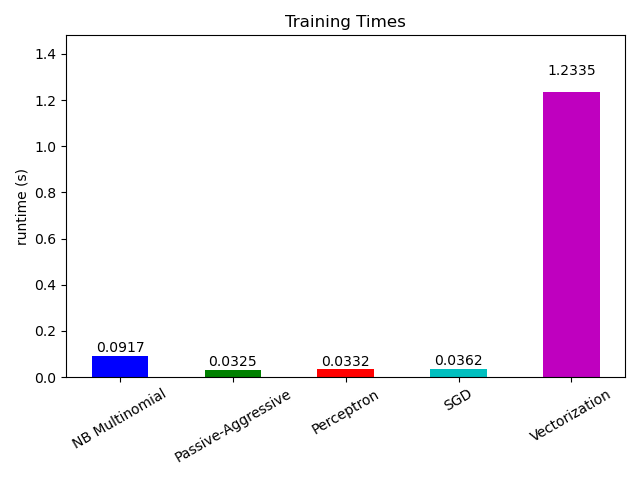9.1. Strategies to scale computationally: bigger data (original) (raw)
For some applications the amount of examples, features (or both) and/or the speed at which they need to be processed are challenging for traditional approaches. In these cases scikit-learn has a number of options you can consider to make your system scale.
9.1.1. Scaling with instances using out-of-core learning#
Out-of-core (or “external memory”) learning is a technique used to learn from data that cannot fit in a computer’s main memory (RAM).
Here is a sketch of a system designed to achieve this goal:
- a way to stream instances
- a way to extract features from instances
- an incremental algorithm
9.1.1.1. Streaming instances#
Basically, 1. may be a reader that yields instances from files on a hard drive, a database, from a network stream etc. However, details on how to achieve this are beyond the scope of this documentation.
9.1.1.3. Incremental learning#
Finally, for 3. we have a number of options inside scikit-learn. Although not all algorithms can learn incrementally (i.e. without seeing all the instances at once), all estimators implementing the partial_fit API are candidates. Actually, the ability to learn incrementally from a mini-batch of instances (sometimes called “online learning”) is key to out-of-core learning as it guarantees that at any given time there will be only a small amount of instances in the main memory. Choosing a good size for the mini-batch that balances relevancy and memory footprint could involve some tuning [1].
Here is a list of incremental estimators for different tasks:
- Classification
- Regression
- Clustering
- Decomposition / feature Extraction
- Preprocessing
For classification, a somewhat important thing to note is that although a stateless feature extraction routine may be able to cope with new/unseen attributes, the incremental learner itself may be unable to cope with new/unseen targets classes. In this case you have to pass all the possible classes to the first partial_fit call using the classes= parameter.
Another aspect to consider when choosing a proper algorithm is that not all of them put the same importance on each example over time. Namely, thePerceptron is still sensitive to badly labeled examples even after many examples whereas the SGD* and PassiveAggressive* families are more robust to this kind of artifacts. Conversely, the latter also tend to give less importance to remarkably different, yet properly labeled examples when they come late in the stream as their learning rate decreases over time.
9.1.1.4. Examples#
Finally, we have a full-fledged example ofOut-of-core classification of text documents. It is aimed at providing a starting point for people wanting to build out-of-core learning systems and demonstrates most of the notions discussed above.
Furthermore, it also shows the evolution of the performance of different algorithms with the number of processed examples.
Now looking at the computation time of the different parts, we see that the vectorization is much more expensive than learning itself. From the different algorithms, MultinomialNB is the most expensive, but its overhead can be mitigated by increasing the size of the mini-batches (exercise: changeminibatch_size to 100 and 10000 in the program and compare).

